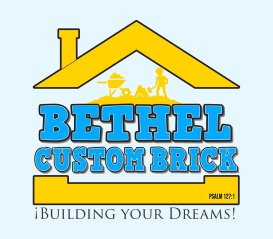Stamped concrete has become a popular choice for enhancing outdoor spaces due to its durability, versatility, and aesthetic appeal. Whether you’re considering a stamped concrete patio, driveway, or walkway, understanding the installation process can help you feel confident in your investment and ensure a successful project. While the process requires professional expertise for optimal results, knowing what to expect can help you make informed decisions and prepare for your project.
Here’s a step-by-step guide to the process of installing stamped concrete.
Step 1: Planning and Design
Before the installation begins, careful planning is essential to ensure the project meets your needs and complements your property.
- Assessing the Site: The area is inspected for drainage, grading, and any existing structures that might affect the project.
- Choosing a Design: Patterns, colors, and textures are selected based on your preferences and the architectural style of your home.
- Preparing the Budget: The project scope and design complexity influence the overall cost.
Step 2: Site Preparation
Proper preparation of the site lays the foundation for a durable and long-lasting stamped concrete surface.
- Clearing the Area: Grass, debris, and any existing materials are removed to create a clean workspace.
- Installing Forms: Wooden or metal forms are placed around the perimeter to define the area and shape of the concrete.
- Grading and Compacting: The soil is graded and compacted to ensure a stable base and proper drainage.
Step 3: Pouring the Concrete
Pouring the concrete is a critical step that sets the stage for the stamping process.
- Mixing the Concrete: The concrete is mixed to the appropriate consistency for pouring and stamping.
- Pouring and Spreading: The concrete is poured into the forms and evenly spread with tools to create a smooth surface.
- Adding Reinforcement: Rebar or wire mesh is often incorporated before the pour to enhance the structural integrity of the slab.
Step 4: Coloring the Concrete
Coloring adds visual appeal and helps replicate the look of natural materials like stone, brick, or wood.
- Integral Color: Pigments are mixed into the concrete before pouring to achieve consistent color throughout the slab.
- Color Hardener: A dry powder is applied to the surface to enhance the color and strengthen the top layer.
- Antiquing Release Agent: A secondary color is added during stamping to create depth and a more realistic texture.
Step 5: Stamping the Concrete
Stamping is the hallmark of this process, transforming plain concrete into a decorative masterpiece.
- Placing the Stamps: Stamps with the chosen pattern are carefully pressed into the concrete while it’s still wet.
- Applying Pressure: Tools are used to ensure the stamps leave a consistent and well-defined impression.
- Creating Texture and Patterns: Borders, inlays, or custom designs can be added for additional detail.
Step 6: Curing the Concrete
Proper curing ensures the stamped concrete achieves its full strength and durability.
- Initial Curing: The concrete is left undisturbed for a specific period to harden.
- Sealing the Surface: After curing, a sealant is applied to protect the surface, enhance the color, and provide a polished finish.
- Preventing Cracks: Control joints are added to allow for natural expansion and contraction, minimizing the risk of cracks.
Step 7: Post-Installation Maintenance
Once the concrete is installed, ongoing care is essential to maintain its appearance and longevity.
- Regular Cleaning: Sweep away dirt and debris and wash with mild soap and water as needed.
- Resealing: Reapply sealant every 2–3 years to protect the surface from wear and fading.
- Avoid Harsh Chemicals: Use sand instead of salt-based deicers to prevent damage during winter.
Benefits of Stamped Concrete Installation
- Versatility in Design: Choose from a wide range of patterns, colors, and textures to suit your style.
- Durability: Stamped concrete withstands heavy traffic, weather conditions, and wear over time.
- Cost-Effective: Achieve the look of high-end materials like natural stone or brick at a fraction of the cost.
- Low Maintenance: A sealed surface resists stains, cracks, and fading, requiring minimal upkeep.
Bethel Custom Brick – Your Trusted Partner for Stamped Concrete in Detroit
At Bethel Custom Brick, we bring expertise and attention to detail to every stamped concrete project. Serving the Detroit Metro area, we specialize in designing and installing custom patios, driveways, and walkways that enhance your property’s beauty and functionality. Contact us today to learn more about our services and start transforming your outdoor space with high-quality stamped concrete.


